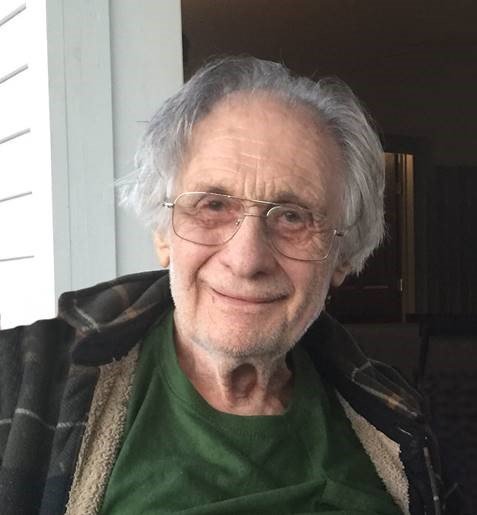
Obituary of Peter Van Soest
Please share a memory of Peter to include in a keepsake book for family and friends.
Peter Van Soest, a pioneering animal scientist who revolutionized how researchers measure the nutritional value of ruminating animal
forages, elevating the study of grass, fiber, and ruminant ecology to great science, has died. He was 91.
Working for the US Agriculture Research Service (USDA) in Beltsville Maryland in 1964, Van Soest developed a detergent analysis system to precisely measure nutritional yields in large farm animals which permanently changed animal science. With a focus on ruminant livestock (cattle, sheep, goats) that rely on microbes in their gut to digest nutritionally recalcitrant carbohydrates (fiber) in grasses, his novel system pioneered a way to precisely separate the chemical components of feeds into those digestible to all animals, those indigestible without fermentation, and those totally un-digestible, thus opening research to measuring not just the chemical composition, but also the exact energy output.
Van Soest’s detergent analysis replaced the inaccurate crude fiber systems in place since the 1860’s which relied largely on observations of animal behavior, and he dismissed critics who argued the chemical analysis of feeds was a conceptual dead end rather than a beginning. Van Soest fundamentally believed an accurate chemical description of feeds and the inherent energy within was just the beginning of precisely predicting animal potential, and his detergent analysis system has now been broadly elaborated upon and assimilated worldwide.
Van Soest joined the research faculty at Cornell University in 1968 where he continued to refine his detergent system conducting fiber digestion studies in ruminants and over 50 other species, including humans. It was at Cornell that he published hundreds of papers including one with his research colleagues Jimmy Robertson and Betty Lewis on fiber, neutral detergent fiber, and non-starch polysaccharides (1991) which has been cited more than 24,000 times. And it was here at Cornell that he completed his seminal textbook, The Nutritional Ecology of Ruminants (1982, 1994), which has been cited over 15,000 times. He received numerous prestigious awards from the American Dairy Science Association and the American Society of Animal Science, was a fellow of the American Institute of Nutrition, and received an honorary Doctorate from The University of Milan in 1992.
Slender, 6’2”, long haired, and dressed in his signature denim jeans and cowboy boots, “Pete” was singularly unconventional, passionate, and classically absent minded. His lectures were said to be fascinating and long. In 2001, John Murray Elliot, Cornell Professor Emeritus wrote, “In the classroom he was usually so engaged in his subject that he appeared totally unaware of time and often, long after the normal class period had ended, had to be interrupted and reminded that students did have other commitments. It was rumored at one time that his students had presented him with an alarm clock for this purpose”. And he continually accepted invitations for consultation or lectures such that he “represented a real challenge for a number of department chairmen who sometimes did not know in what part of the world Peter was at any given time”.
He consulted all over Europe, spent months in India, South America, Africa, and China, and he particularly loved his colleagues in Sicily, where he was later made an honorary citizen of Ragusa. In 1979 he testified at Senate hearings on overoptimistic nutritional statements by the commercial cereal industry, and in the same year he fed shredded Playboy Magazine and Christian Science Monitor to his research animals to establish each publication’s exact nutritional value.
Peter John Van Soest was born on June 30, 1929 in Seattle, Washington, and raised on a dairy farm set against the foothills of the Cascade range at the confluence of the Snohomish and Pilchuck Rivers. Long before the explosive growth that would eventually come, the nearest town, Snohomish, was remote and small. In 1932, when Peter was 6, the entire Snohomish student population fit into one wooden schoolhouse for which Peter and his sister Betty had to take the “Shorts” bus, named for the 19thcentury family that had first cleared the land. He helped his father with planting, harvesting, and caring for the cows, but it was obvious from the start Peter was not an ordinary farm boy.
When not doing his chores Peter spent much of his childhood alone dividing his time reading history, studying the periodic table and listening to classical music on the family radio. As his father had emigrated from Holland (where his family supported a tradition of artists), Peter acquired an oil paint set, and he explored the surrounding mountains painting landscapes and (it was said) drinking whisky. According to his sister, Peter spoke endlessly of geology, plants, the behavior of animals, and the nature of evolution. For his eccentricities he was teased and dismissed at school, his early teachers thought he was deficient, and even his father at times questioned whether he would be suitable to eventually take over the farm. Within this ruthless and often profound solitude Peter forged a single-mindedness that he maintained throughout his life, that empirical thought and education were the only way forward.
Peter received his Bachelor of Science (1951) and Masters (1952) from the Washington State College, Pullman, where he studied calcium and magnesium metabolism under the guidance of TH Blosser. He went on to receive his PhD from the University of Wisconsin in 1955 where he researched the effects of low fiber diets in dairy cows and goats under the supervision of NN Allen. Peter then spent two years at Walter Read Army Institute of Research, Washington DC where he worked on metal chelation, or selectively bonding agents to metals, which conceptually reflected what was to come. He then joined the Agricultural Research Service at the USDA in Beltsville, Maryland, and it was here under the supervision of Dr. Lane Moore Peter developed his detergent system for nutrient and fiber analysis. In 1968, Peter joined the Department of Animal Science at Cornell University where he spent the remainder of his career.
While in Washington DC, Peter met and married Marian Ham where they had three children, John, Anne and Justin, and eventually settled in Ithaca, NY. The house was filled with science volumes, classical LP records, a full size harpsichord, various stringed instruments, and a large quadraphonic stereo, and there were always graduate students and colleagues milling like family. Peter played recorder, formed a quartet to play medieval musical favorites, and he experimented with musical composition. In 1974, the entire family moved to England for a sabbatical, crossing the Atlantic by ship, where Peter worked at the Grassland Research Institute in Hurley. Together they drove thousands of miles exploring Britain’s history from end to end. In the 1990’s he built a house outside Ithaca where he spent the remainder of his retirement.
To sit with Peter and enjoy one of his delicious Indian meals, to share a bottle of wine and listen to music was a gift. He was kind, yet never suffered fools. Peter once said, “I participated in something that was very remote, a backwater in science, and then it became very important.”
In retirement he continued to publish papers, give talks and revise his book. His final research paper was published in 2020 (when Peter was 90), and just a few weeks ago he was working with data on the relationship between the summer solstice and lignin content.
Peter is survived by his ex-wife Marian Van Soest and their three children and wives, John and Terri Van Soest, Anne Van Soest and Jaye Lopez Van Soest, and Justin and Kierston Van Soest, as well as four grandchildren, Brianna Van Soest, Abby Van Soest, Oliver Van Soest, and Phoebe Van Soest.
Gifts may be made to Ithaca Hospicare in Peter’s name via the following link; https://www.hospicare.org/donate/
Donation towards archiving Peter Van Soest’s scientific materials, as well as support for Animal Science graduate students, is being arranged through Peter’s friend and colleague Mike Barry.
Please contact; MikeBarry@agmodels.com
To plant a beautiful memorial tree in memory of Peter Van Soest, please visit our Tree Store

A Memorial Tree was planted for Peter
We are deeply sorry for your loss ~ the staff at Ithaca Cremation Services
Online Memory & Photo Sharing Event
Ongoing
Online Event
About this Event

In Loving Memory
Peter Van Soest
1929 - 2021
Look inside to read what others have shared
Family and friends are coming together online to create a special keepsake. Every memory left on the online obituary will be automatically included in this book.
Services for Peter Van Soest
There are no events scheduled. You can still show your support by planting a tree in memory of Peter Van Soest.
Plant a tree in memory of Peter
Contact
(607) 274-7544
110 S. Geneva St. - PO Box 403
Ithaca, New York 14850
Looking for something you can't find? We make it easy to get the answers you need. Please feel free to contact us at anytime




